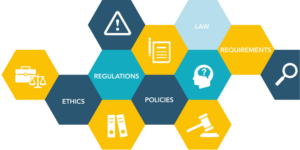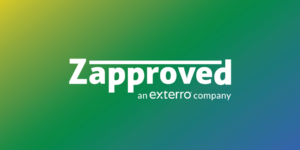
Moving even a portion of your organization’s ediscovery from outside counsel to your own legal department can be a daunting prospect that involves many decision-makers, each with their own priorities. Every organization has a handful of key stakeholders that need to sign off on the transition to in-house ediscovery. These can include General Counsel, the head of Legal Operations, IT stakeholders, and sometimes even C-Suite executives. Additional influencers can include the end user—which is why decision-makers should prioritize ease of use as a top consideration—as well as outside counsel or consultants.
When it comes to the purchasing decision, each stakeholder has unique considerations and sometimes competing priorities, so it’s important to tailor your communication about ediscovery software to each audience. In this post, we’ll walk through some tips to help you effectively make your case with each of these key players.
Legal Operations
A great place to start making the case for in-house ediscovery is with a legal operations lead. Legal ops is focused on balancing cost reduction and risk mitigation, while ensuring efficiency throughout the department. They’re often the most attuned to the processes, technology, and budget of the legal department, and they will be aware of most outstanding weaknesses and potential opportunities to reduce cost.
Legal ops is an emerging domain within the corporate legal industry, so it’s possible your organization may not have a dedicated role established yet—although it’s likely someone in your legal department is wearing the legal ops hat as part of their job. When approaching your legal ops lead, you should feel empowered to have a more granular conversation around the potential benefits and challenges of migrating to ediscovery. They can also be a valuable resource to help you position your proposal with other stakeholders.
General Counsel or the Chief Legal Officer
Your organization’s General Counsel or Chief Legal Officer (CLO) is responsible for managing the legal risk of the organization. They must ensure that discovery processes are aligned with legal requirements. As head of the legal department, they also need to manage their team, oversee budget, and carry out top-down executive priorities like digital transformation initiatives or cost-cutting measures.
The general counsel will often delegate ediscovery responsibilities to an associate general counsel or another attorney with an interest in technology, processes, or ediscovery. This means you may need to identify the right individual within the general counsel’s chain of command to approach regarding your organization’s legal discovery.
While the general counsel or CLO will have deep legal expertise, they may be removed from the technical aspects of day-to-day work, so try to avoid getting too in-the-weeds. They may also need to relay the information you share with other departments or executives, so present your case in easy-to-digest takeaways that relate to the goals of your department and overall business.
The IT Team
IT’s primary role in the ediscovery software purchasing process is to ensure any new technology—especially cloud-based tech—meets cybersecurity standards and aligns with the organization’s overall IT strategy. Like the legal department, IT is often considered a cost center for the organization, so it can sometimes be difficult to secure their support without a top-down mandate from the board or C-Suite. Try to avoid having to jump through this extra hoop by clearly explaining how ediscovery can benefit the IT department, i.e., what’s in it for them.
By tailoring your case to each of the key stakeholders within your organization, you can boost your chances of securing the support you need to experience a smooth and effective transition.
The document preservation portion of ediscovery is the area where legal and IT are most connected. If a preservation request comes through, IT may be tasked with ensuring data is preserved in place. They’re also usually responsible for knowing how data is organized within the organization, so they can help you determine where the data lives for when it needs to be preserved and collected for review.
By automating these processes with ediscovery software, IT stands to recapture the valuable time, resources, and stress they spend managing this process manually. This case is so compelling that IT departments will sometimes even volunteer budget for additional ediscovery features that the legal department wasn’t planning to purchase.
When you approach IT, remember to relay this value proposition clearly. Be prepared to either provide technical specs or connect them with a representative from your chosen ediscovery vendor to discuss those details directly.
The C-Suite
While it’s more rare for the C-Suite to weigh in on ediscovery decision-making, a top-down push to bring legal discovery in-house can expedite the process, lock down financing, and mandate the support of other departments like IT. Senior executives, especially in larger companies, may only get involved for financial due diligence, particularly if it’s a large investment for your organization.
When communicating with these important and busy stakeholders, remember to condense all of your information into layperson’s terms and laser-focus on the benefit for the business. While these executives care about reducing risk and costs, they’ve delegated the nitty-gritty details to the general counsel or CLO. Stay high-level and map back to business goals and projected return on investment (ROI).
Bringing more legal discovery in-house can be an effective way to update processes, cut costs, and save time across your organization. By tailoring your case to each of the key stakeholders within your organization, you can boost your chances of securing the support you need to experience a smooth and effective transition.
To learn more about how ediscovery software can help your organization save time and reduce costs, sign up to get a free ROI analysis that you can take back to your team.




